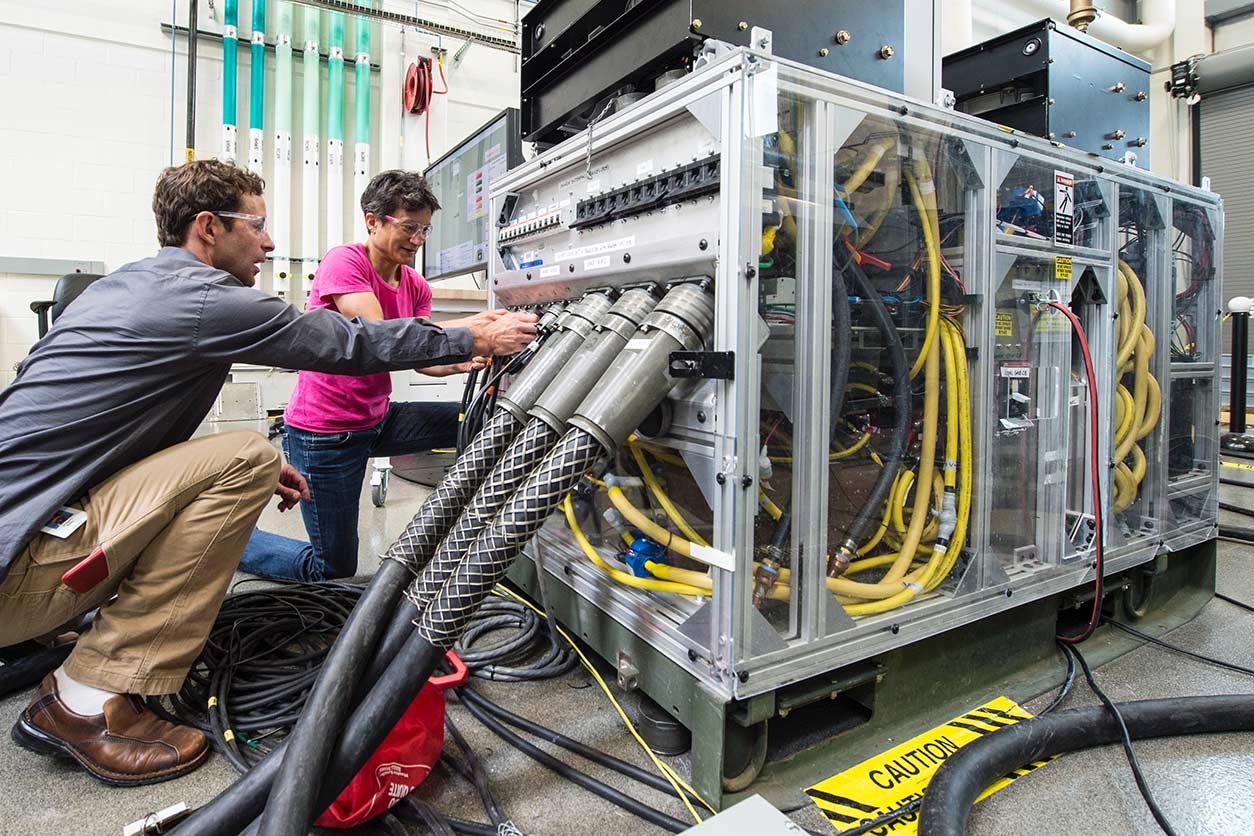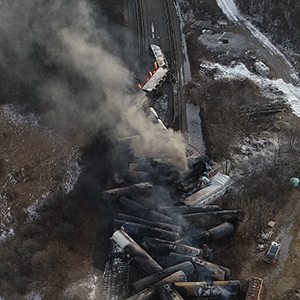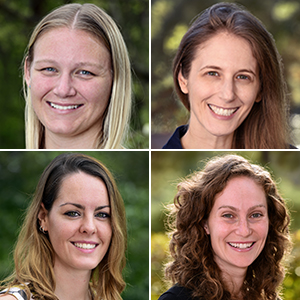Through support from the NIEHS Superfund Research Program (SRP), academic institutions are developing educational and training programs for industrial hygienists and scientists in the areas of emerging technologies, new environmental contaminants of concern, and disaster response.
“These projects train the next generation of students, postdoctoral trainees, and professionals interested in researching, safely handling, and detecting hazardous substances, and the universities’ efforts will help to address emerging needs in occupational safety and health,” said NIEHS Health Scientist Administrator Danielle Carlin, Ph.D. She leads the SRP Occupational Health and Safety Training Education Programs on Emerging Technologies (see sidebar).
 New technologies involved in electronic waste, 3D printing, novel drug delivery, and other processes may create potential health hazards for workers. (Photo courtesy of Adi Goldstein / Unsplash.com)
New technologies involved in electronic waste, 3D printing, novel drug delivery, and other processes may create potential health hazards for workers. (Photo courtesy of Adi Goldstein / Unsplash.com)New technologies, new safety concerns
The University of Minnesota, the University of Iowa, and the University of Utah(https://tools.niehs.nih.gov/srp/programs/Program_detail.cfm?Project_ID=R25ES033035) aim to help professionals anticipate, recognize, and evaluate exposures to hazardous materials. Their curriculum is tailored to workers in nanotechnology, additive manufacturing, and drug delivery.
Also, Johns Hopkins University, the University of Maryland, George Mason University, and Old Dominion University(https://tools.niehs.nih.gov/srp/programs/Program_detail.cfm?Project_ID=R25ES033038) are developing educational modules that will increase safety and reduce risks related to 3D printing, novel disinfection technologies, and nanobiotechnology. The universities will also provide training in disaster preparedness and risk management.
Handling hazardous waste
The University of Michigan, the University of Cincinnati, and Michigan State University(https://tools.niehs.nih.gov/srp/programs/Program_detail.cfm?Project_ID=R25ES033042) will train professionals in environmental and occupational health and safety, and in the public health and engineering aspects of hazardous waste control. The education will address joint occupational and environmental stressors, including exposures to infectious and physical agents. Another goal is to increase awareness of interventions that can reduce exposure to hazardous air particles and substances encountered in home health care, such as cleaning solutions and opioids.
SRP funding also will advance training on waste management practices related to nanomaterials and consumer electronics. A multidisciplinary educational effort involving the University of California (UC), Los Angeles(https://tools.niehs.nih.gov/srp/programs/Program_detail.cfm?Project_ID=R25ES033043); UC Irvine; California State University (CSU) Fullerton; and CSU Long Beach is informed by the collective knowledge of industrial hygienists, environmental scientists, population health experts, and community partners.
Elsewhere, focus is on emerging technologies specific to biological and infectious agents. The University of Utah, California Polytechnic State University San Luis Obispo, Montana Technological University, and Texas A&M University are creating courses to enhance management of agents such as bacteria and viruses, and hazardous substances at cleanup sites.
 SRP aims to increase the number of well-trained industrial hygienists, graduate students, and other professionals to ensure the health and safety of individuals working in emerging fields. (Photo courtesy of Science in HD / Unsplash.com)
SRP aims to increase the number of well-trained industrial hygienists, graduate students, and other professionals to ensure the health and safety of individuals working in emerging fields. (Photo courtesy of Science in HD / Unsplash.com)Vulnerable communities and novel technologies
Another collaboration will train industrial hygiene students to use new technologies, such as sensors and wearable devices, to obtain environmental data. The effort involves the City University of New York (CUNY) School of Public Health; the Icahn School of Medicine at Mount Sinai; Queens College, CUNY; and the CUNY Advanced Science Research Center. The program will enhance the skills of professionals and community organizations so that they can provide Spanish-language training in occupational safety and health to low-wage Latino workers.
Finally, a collaboration between Purdue University, the University of Toledo, and the University of South Florida will provide education on how to assess, mitigate, and prevent potential harm to human health resulting from key emerging technologies and related contaminants. Training will focus on nanoparticles, harmful algal blooms, and occupational exposure to noise and air pollution. Special web platforms, including a virtual reality laboratory, will be accessible to a large, diverse population.
(Mali Velasco is a research and communication specialist for MDB Inc., a contractor for the NIEHS Superfund Research Program.)









